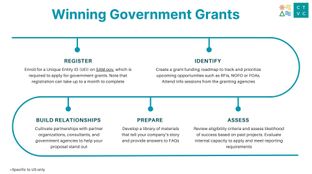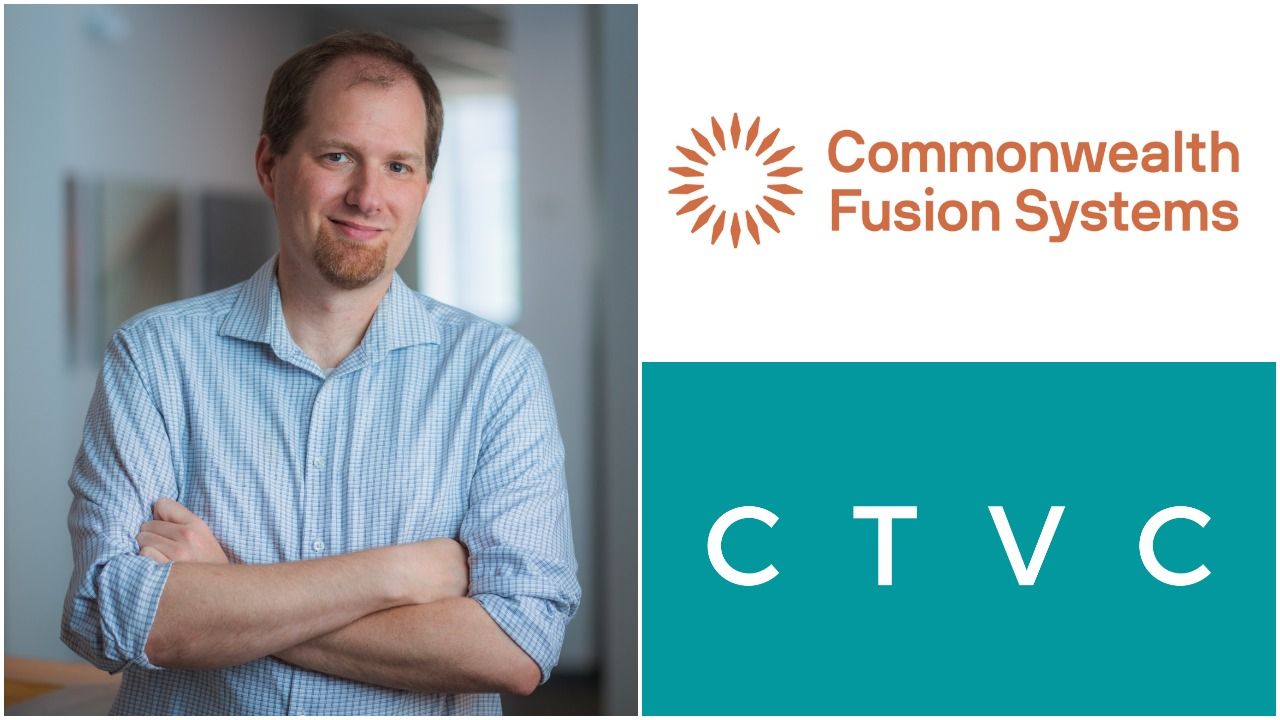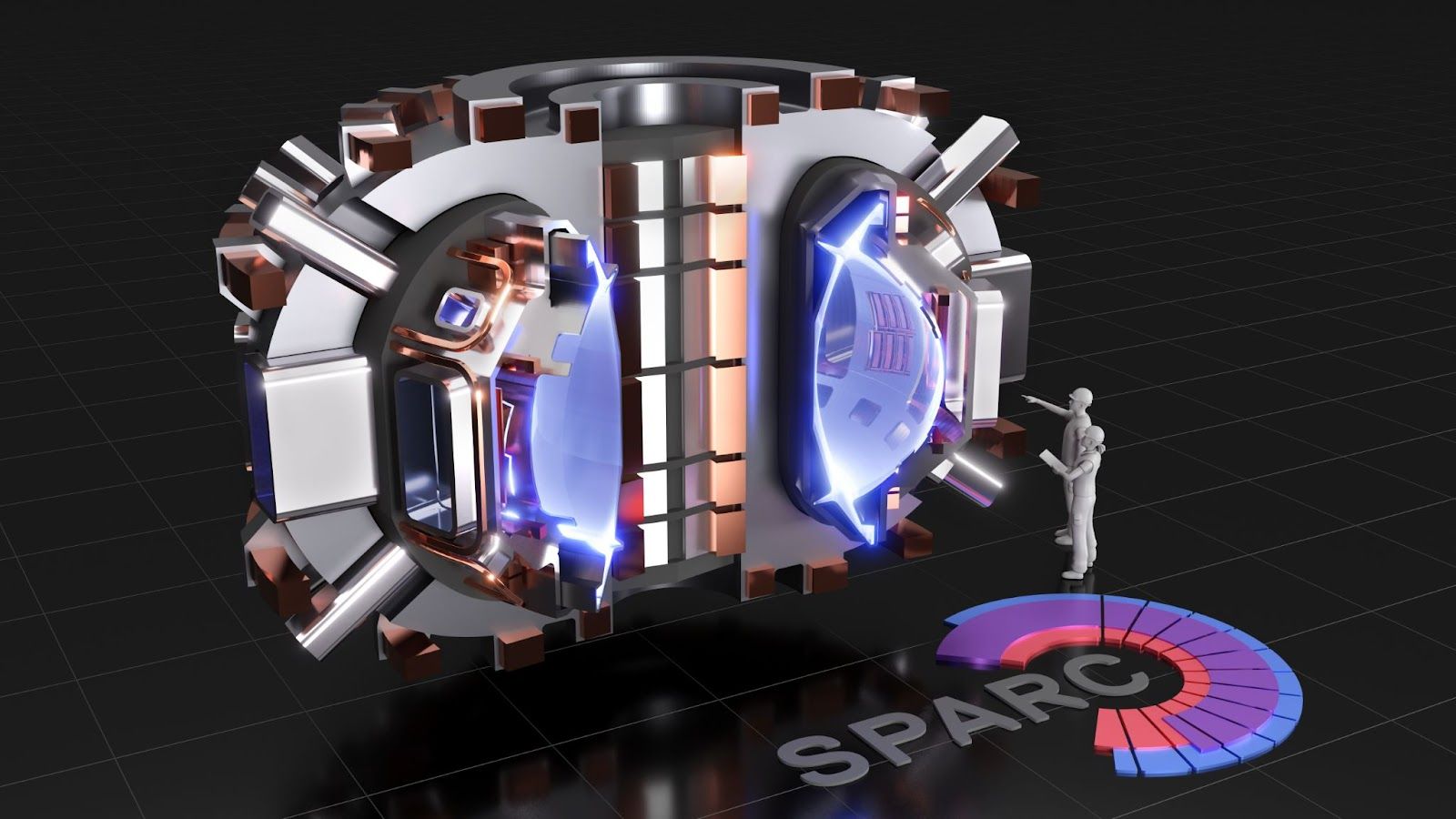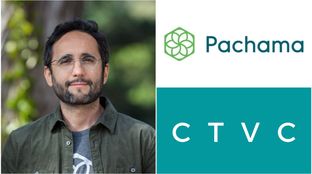
🌎 Get ready with me: Government grants edition 💅💵
A founder’s guide to winning non-dilutive funding with Elemental Excelerator
Apex predator of climate tech strikes $1.8b financing

There’s deep tech, and then there’s molten star power tech. Fusion is the latter. If it works, it has the potential to transform energy from a resource to a technology. If it doesn’t, our odds plummet of staying under a catastrophic level of global warming through deployment of just existing clean technologies, as do billions of dollars of (relatively) early stage capital. Ultimately, it’s hard to call ventures like CEO Bob Mumgaard’s Commonwealth Fusion Systems ‘start-ups’ given they’re sitting atop (literal) decades of government research and intellectual capital spanning across industries from oil and gas to financial services. In this conversation following CFS’ $1.8b Series B, we go deep on avoiding the financial stack’s Valley of Death, the role of government in kick starting innovation, and where Tesla has helped the quest for climate holy grails.
What is fusion energy and how is it different from existing nuclear power generation?
Fusion energy is a distinct energy source, combining light elements together to get energy in the same way that stars do. It’s the opposite of existing nuclear power’s process of fission which splits atoms to get its energy. Unlike fission, fusion uses no uranium or plutonium and there is no chain reaction which creates nuclear waste. Fusion combines the lightest elements (i.e., hydrogen) together in high temperatures and outputs helium and a massive amount of energy - 200 million times more energy per reaction per fuel than burning fossil fuels. The input of fusion is effectively nothing. This would mean that you could create a fuel that’s universally available, free, and never runs out. We could go from a world of energy as a resource to a world of energy as a technology, with zero-carbon dispatchable heat to drive turbines for electricity or be used in industrial processes.
To date, no one has been able to successfully achieve this. We know fusion is physically possible because we know how the stars work and what conditions are required for it. We’ve studied fusion in national labs and universities to get those conditions right for a very long time. We've gone faster than Moore's law to get there, and now the task is to get over the top of the hump and get more power out the end than energy consumed.
What have been the key challenges that have made fusion unachievable so far?
Fusion is deep science. You have to be able to insulate something to get it to a level of heat that does not exist on Earth. So the key challenge has been can you get plasmas to do what you want them to do? Plasmas are unruly - we don’t understand everything about them and they’re an active area of research. It’s similar to flying. We knew birds could fly, but how could we build a machine to do that? Turns out you had to understand aerodynamics and understand the right set of conditions. Once you do that you can build lots of types of planes.
Over the past few decades, fusion scientists have been building the framework to deeply understand the science behind the technology. The progress has been astounding, but from a practical implementation standpoint the world doesn't see any of that. No one cared that people were gliding before they were flying. They looked at the Wright brothers and said “that’s impossible”. Until it wasn’t.
How will fusion be deployed? What is CFS’ plan to implement fusion?
The world has been working on fusion in labs as a science experiment for a very long time. Recently companies have also started entering the space, with some going back 20 years ago like TAE. We’re now seeing more and more startups applying different techniques and innovation to what was previously a lab-bound exercise.
CFS has been around for three years, with the idea that we can leverage the most scientifically studied approach to fusion which essentially uses a giant magnetic bottle, called a tokamak, to get the conditions right to achieve fusion. But historically and with previously existing magnet technology, in order to achieve net energy from fusion, tokamaks must be enormous - such as ITER in France. This is a great science experiment, but not ideal for commercialization. Our first challenge was to get over that hump by building new groundbreaking magnet technology. These new magnets are made from recently commercialized high temperature superconductors which allowed us to build the strongest fusion magnets of their kind in the world. This new class of magnets would be twice as strong as what previously existed and enable a much more compact fusion machine. In September of this year, we successfully demonstrated this magnet which will enable a fusion machine 1/40th the size of ITER.
Using this breakthrough technology and previously proven science we can now take on our next challenge - building SPARC, the world’s first commercially relevant net energy fusion machine. Our most recent funding round will allow us to get there while also thinking ahead to the next challenge - building ARC, the first commercial fusion power plant.

What is the founding story of CFS and how did you build our team?
We spun out of MIT and tried to be thoughtful about how to approach fusion. We looked outwards to understand what the missing element was within other fusion enterprises. We asked ourselves what role government would play. Would they bring fusion over the line? Would private companies? At the same time, we knew our magnet technology was on the horizon and had really good results out of our existing scientific portfolio.
From there we had to decide if we would exist as a private venture, a philanthropic venture, or as a government-funded entity. Eventually, we decided it should be a startup that is born at scale, can implement with engineering execution, and doesn't get disconnected from the scientific roots of something that is still emerging. We share a model similar to early biotechs or rocket companies.
Next, we collected the founding people, capital and pipeline of talent. We’ve built a very interesting company in terms of our team’s backgrounds. It was a very MIT thing to do. There was no fusion industry so we set out to build one. We took a bit of expertise from aerospace, manufacturing, finance, and so forth and put a pin through it. And that’s CFS.
What do others get wrong about investing in or innovating in this space? What differentiates CFS?
Fusion is a very collegial space. We think there will be multiple approaches and continued innovation. I think of fusion like batteries in that sense. Before we figured out the dominant way to get batteries (lithium-ion) we tried many approaches and some of those have stuck around to this day. In fusion, there isn’t going to be one magic bullet.
We’ve also built out CFS to have a very well considered capital stack. We’re an industrial scale, hard tech company. That means time, money, and people. The closest comparison is SpaceX, which is why a lot of our people and investors come from aerospace. As we manage each project we have to make sure we manage our science risk. If you extrapolate too much into the science, you revert back to discovery mode. We try to minimize that and build an execution-focused team that does exactly what we said we were going to do on the timeline we said we would do it. We’ve been pretty unique in that effort. Between the intentionality of our capital stack and transparency of our timeline, we believe we are outdoing the market.
Congratulations on the just announced $1.8B Series B round! A wide diversity of investors participated from VCs and hedge funds, to universities and pension funds, to corporates. How does the breadth of investor perspectives impact your type of company?
From the beginning, we knew that we needed to pave the runway of funding even as we built the plane. We have a Chief Movement Builder at the C-level who educates and excites the social ecosystem for our new type of product, and it’s similar on the capital front. We’d run out of capital if we built the company with only venture capital from the beginning. We’re a manufacturing enterprise that builds power plants with real steel in the ground, so we need to prepare the pension funds that capitalize infrastructure funds and project finance folks to be aware of and excited about the fusion opportunity. We've been very diligent to always pull in a little bit of capital from the next stage of investors to avoid a Valley of Death in the capital stack.
That same type of thinking also applies on the offensive side of - if we’re successful - this is an extraordinarily disruptive technology. So we have large oil and gas investors at the table to both gauge the effect of fusion on their businesses and lend their expertise on energy infrastructure build outs with the balance sheet to match. Same idea with Google and other corporate leaders, and hedge funds for their strategic intelligence. Oftentimes, the only way to access that intellectual bandwidth is through a financing round. Fundraising is a great excuse to go out and talk to a lot of stakeholders about fusion technology’s impacts.
As the window for mitigating climate change shrinks, how do you think about allocating time (and dollars) towards deploying current technologies (solar, wind) vs silver bullet new solutions like nuclear fusion?
I think it’s a false dichotomy. People get stuck in the relative safety of building the stuff that we already know works, as fast as possible. We need to turnover $80T of infrastructure globally to clean tech, and if we don’t, the world bakes. That means deploying existing technologies as fast as possible. Fossil fuel companies need to turn their oil wells into geothermal wells, and people that know how to install solar should put solar panels everywhere they can.
At the same time, we need to recognize that we don’t yet have all of the tools. No amount of policy will solve this problem, no amount of capital can solve climate change - we need innovation.
Imagine if in the 1970s we’d decided to stop innovating solar technology since we’d decided that it was good enough already. Shale oil would have entirely shuttered the industry. The world is unpredictable, and we need innovation to keep driving down costs and open unimaginable possibilities.
$1.8b is a lot of money. But comparatively, it’s a small wind or solar project. If we succeed, we’ll have used that same amount of capital to unlock a completely different scale curve of energy generation. We can’t let deployment investment get in the way of investment in innovation of fundamentally disruptive climate technologies.
What’s the role of government funding fusion development going forward?
Fusion is a product of decades of government research. Government-funded R&D plays a key role especially with funding innovation at the beginning to get it over the hump that the private side can’t get through. The federal government passed a law last year that would set up a fusion cost share program, which if funded would mean more R&D and policy incentive structures around commercial fusion.
On the other side, there’s regulation. As these new technologies come up, people have to understand them to get comfortable with them. We should work through these regulatory processes in a way that both educates and recognizes fusion as a new technology, but also doesn’t slow down key innovation that could fundamentally address the existential threat of climate change.
All of a sudden a crop of new private fusion companies have popped on the scene. Why now? And what differentiates CFS?
When we started CFS, I couldn’t have guessed the market conditions and appetite for climate technology today. Speaking as someone who lived through Cleantech 1.0, it’s particularly exciting to watch. Let’s get some wins, and keep it going!
Fusion is an apex predator in that it benefits from an ecosystem of other technologies. Like how aerospace relies on an interdisciplinary intersection of technologies, fusion similarly benefits from advanced computation, atom manufacturing, superconductors, and new material development. Fusion development isn’t a standalone commodity, it’s complex.
The Tesla Effect shows that clean tech development can both be done, and be hugely profitable. The effect benefits all tough tech clean companies, including the longtail of fusion startups, and has certainly rubbed off on CFS.
Ultimately being a climate technologist requires optimism. At CFS we’re fundamentally hopeful. The problem that we’re up against is easy to get lost in, but the collection of smaller challenges offer niches for people of all sorts to fill - whether you’re a lawyer, technician, or investor. The climate transformation will be as big as the computing economy. We’re changing the largest market in human history faster than we’ve changed any other market, and the effect will ripple through everything. Fusion and CFS are out on the farthest tail of climate technologies, but are also the most hopeful.
Commonwealth Fusion Systems is rapidly growing and hiring a team to bring clean, limitless fusion energy to the world to combat climate change. Want to join the movement? Check out the CFS website for current job listings.

A founder’s guide to winning non-dilutive funding with Elemental Excelerator

Infrastructure investing for impact with Banyan Infrastructure's Amanda Li

Venturing into nature with Diego Saez-Gil at Pachama